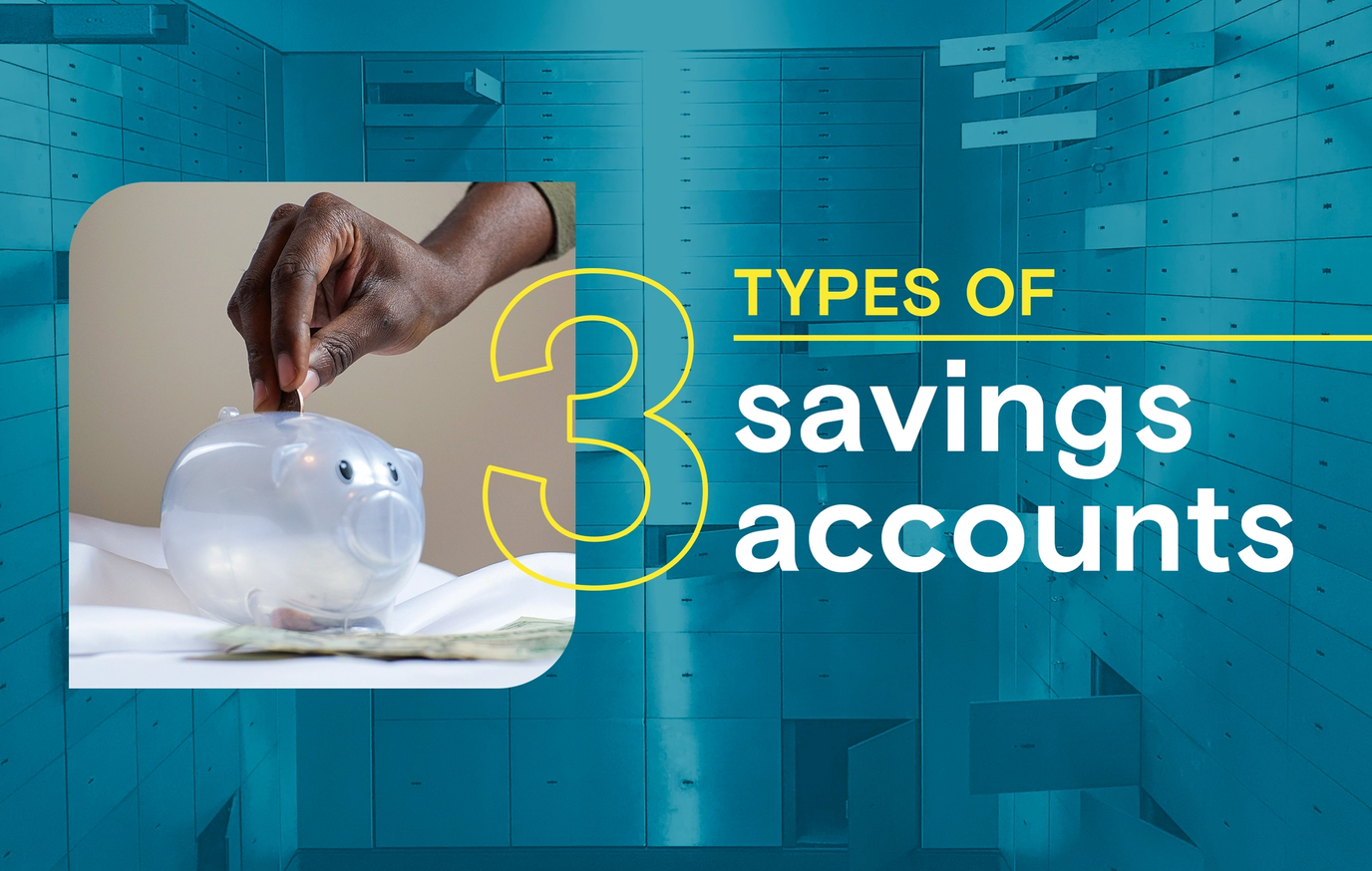
Rounding it up
There are multiple types of savings accounts in Canada, the most common of which are the Tax-Free Savings Account (TFSA), High Interest Savings Account (HISA), and Joint Savings Account.
There are definite advantages to any of these savings accounts. They’re easy to open, plus your deposited money is safe and accessible.
A HISA can be a great investment vehicle thanks to the interest it accrues.
If you’re a couple looking to save for a house, car, child, or other big financial decisions, consider a joint savings account.
While there’s no wrong way to go about saving money, it’s probably advisable to forego putting your money under the mattress and into a bank account instead. But, which bank account? Let’s get into the nitty gritty of various savings accounts, and how to pick the right one for you.
What is a savings account anyways?
A savings account is like its very name implies: A type of bank account intended to store your savings. Its function sounds similar to that of a chequing account, but it’s not quite the same. A chequing account pays for regular expenses, like food and housing. A savings account, on the other hand, is meant to stash away money for an extended period of time in case of a rainy day or for a large purchase in the future.
Money that is in a savings account is considered to be safer than it would be under the aforementioned mattress. Why? Because money in a savings account, usually up to $100,000, is insured by the Canada Deposit Insurance Corporation. (Any money you put into an interest earning KOHO account is eligible for CDIC insurance!)
This security does not apply to money in a savings account that is invested into stocks, bonds, or mutual funds, but any cash value in the savings account is definitely subject to protection by the insurance.
What to consider before opening a savings account
There are a few factors you should keep in mind before opening a savings account. Mainly, the minimum balance requirement, available interest rates, and any fees associated with the savings account.
Different institutions, be it a bank or a credit union, impose different requirements for opening a savings account and the benefits they offer.
Remember to weigh the pros and the cons of each type of savings account. If you need additional guidance, there is a wealth of information available online that cover topics like what savings account to consider based on your financial situation.
It is also important to consider the tax implications of the accruing interest in a savings account. Income generated from a savings account is usually subject to income tax, though it is possible to mitigate this by opening a Tax-Free Savings Account; more on this account below.
Savings accounts: Explore your options
Now that we have a general overview as to what a savings account is, let us explore the details of the types of savings accounts.
1. The Tax-Free Savings Account (TFSA)
This savings account is the most basic type of savings account available and fairly easy to open. Depending on the province, you’re eligible to open a TFSA if you’re 18 or 19 years or older and have a valid Canadian SIN. With that in mind, be sure to check with your particular province to ensure you meet the minimum age criteria to open a savings bank account.
You can open a TFSA at various financial institutions, be it a bank, credit union, or trust company. The terms of each tax-free savings account are unique to each institution. They should be able to answer any questions regarding the TFSAs they have available
While TFSAs are a type of savings account, there are also three types of TFSAs — confusing, we know. There’s a deposit, an annuity contract, and an arrangement in trust. These three options can further be categorized into another two: The redeemable and the non-redeemable deposits. As the name suggests, the redeemable monies can be redeemed without limitation, whereas non-redeemable monies cannot be cashed in without penalty during the term of a deposit.
The types of investments allowed in a TFSA are somewhat limited, as they usually do not involve financial instruments like stocks or mutual funds. Cash is the most common, though bonds are also an option.
2. High-Interest Savings Account (HISA)
A High-Interest Savings Account, sometimes referred to as a high-yield savings account, is the second type of savings account that is worth considering. As its name implies, a HISA yields high interest. Because of this, it is a great option for accumulating compounding interest. Like with other types of savings accounts, minimum age requirements and legal residency or citizenship status are necessary to open this type of account.
The exact interest rates offered for a HISA vary from financial institution to financial institution. Broadly speaking, the interest rates offered by this type of savings account range from .75% to 1.50%. This means that depending on the financial institution where you choose to open up your HISA, your total balance can increase by .75% to 1.50%. This growth compounds over time, growing your savings.
Due to the compounding interest, a HISA is often used as a financial investment product. Unlike a TFSA, however, a HISA is taxed. So any profit generated with the accumulating interest in your HISA is considered taxable income. Also unlike a TFSA, a HISA does not necessarily prefer cash but oftentimes includes stocks and mutual funds as part of its balance.
Depending on the institution where you open a HISA, you’ll encounter different interest rates and benefits.
SPEND SMARTER. SAVE FASTER
3. Joint savings account
The third type of savings account we’ll discuss is the joint savings account. Like the above two, this type of savings account is easy to open as long as you meet the age and Canadian residency/citizenship requirementsA joint savings account is one that is ‘joint’ or shared between two people.
Why would you want to open a joint savings account? Well, there are multiple reasons. One of the most common is a formalized marriage. This type of account is also suitable for those who are involved in a domestic partnership or a common-law marriage. In such situations, the couple can use the joint savings account to set money aside for a house, or anything else that they plan to purchase together.
Another common reason why people open a joint savings account is to save money for a child. In such a scenario, the adult opening the account would be listed as the primary account holder and the child would be listed as the secondary account holder. Like in the joint account between a couple, the monies accrued in the account between an adult and a child can be used to buy something jointly, such as the child’s first car.
The primary benefit of a joint savings account is its shared nature — two people are able to access the account. Plus, those two people maintain the account for the sake of saving for something, together.
You can open a joint account with KOHO. With it, multiple account holders can save jointly while accruing interest*. There are also no limitations on how often the account holders can access their funds. Plus, account holders can set up joint savings goals in-app, and get notified when either partner makes a transaction.
There are many types of savings accounts; TFSAs, HISAs, and joint savings accounts are just three examples, each with unique characteristics and potential advantages. Do your research, and see where you’re at personally to determine which accounts are the right ones for you!
*Interest rates are per year, calculated daily, paid monthly, and can change at any time without notice.

About the author
Yekaterina Galanova enjoys writing about personal finance, as well as aesthetic topics, though she is open to discovering new niches. She enjoys reading, traveling and beautiful landscapes.
Read more about this author